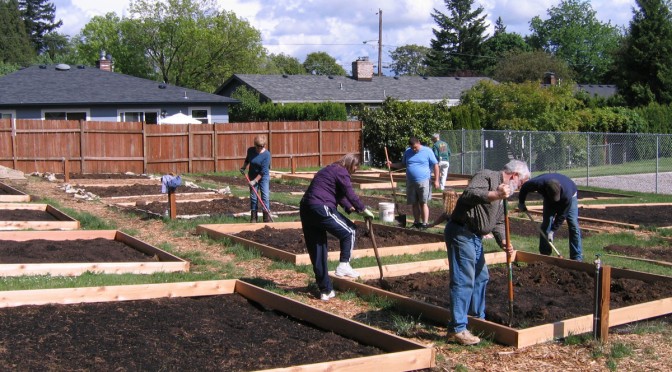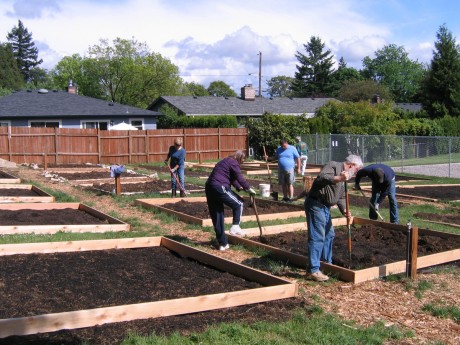Step One: Engage Your Local Community
The first step to building a community garden is to engage your local community and find a group of like minded people who are interested in having a community garden. Speak with neighbors, local businesses and different organizations to learn what the issues are in the local community and how having a community garden could help eliminate some of these issues. Discuss where the garden could be, how it would be planted, maintained, and what the goals of the garden are. By getting everyone in the same page, it helps unite the community and energize those involved to see the garden become a reality.
Step Two: Identify the Resources Needed
It is obvious there will need to be a nice sized piece of land in order to establish a community garden, but there are also other items needed to bring this idea to life. It may be wise to consult with a local farmer, or bring in someone who has built a garden before, to get a better understanding of the items needed, such as a: fencing, boards, tractor to plow the land, or a hand tiller, etc. This is also an outstanding way to network with people in the community, share with them what you are doing, and see if they are willing to help. Networking and relationships will go a long way in determining the success of the community garden and is a great way to get others ideas, as well as expertise.check the website http://www.instructables.com/id/How-to-create-a-community-garden/ for more detailed information.
Step Three: Choose a Garden Location
If you have not yet established a location for the community garden, now is the time to do so. Some locations are based upon visibility, while others are chosen because of their access and size. Having a clear plan as to why your community is establishing a garden is an essential element to determining the final location of the garden. Once you identify the ideal piece of land, check to find out who owns the land and discuss with them the concept of the community garden. It is important to have multiple locations picked out in case your first option is not available for use.
Step Four: Research the Land
Before you ever plant anything in the chosen site, make sure to do some research on the land to ensure the soil is safe for food growth. Take samples of the soil and have them analyzed to find out more specific details about your soil, including its quality and any potential food contaminates.follow our latest blog posts for more details.
Step Five: Garden Design
Every community garden is unique and will be used to fulfill different needs. Design your community garden based on the needs of the community, size, location, as well around the overall mission of the garden.
Step Six: Get Planting
Now that all of the prep work has been done and the soil tilled, get ready to plant seeds and implement all you have learned along the way. Once the crops begin grow, be sure to let everyone in the community know, this will go a long way to gaining new supporters and potential donors to keep the garden running efficiently and effectively.


